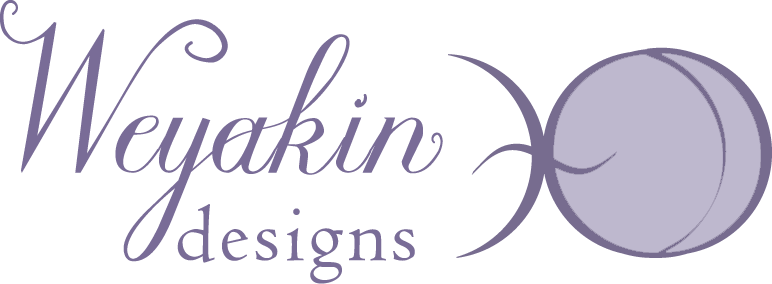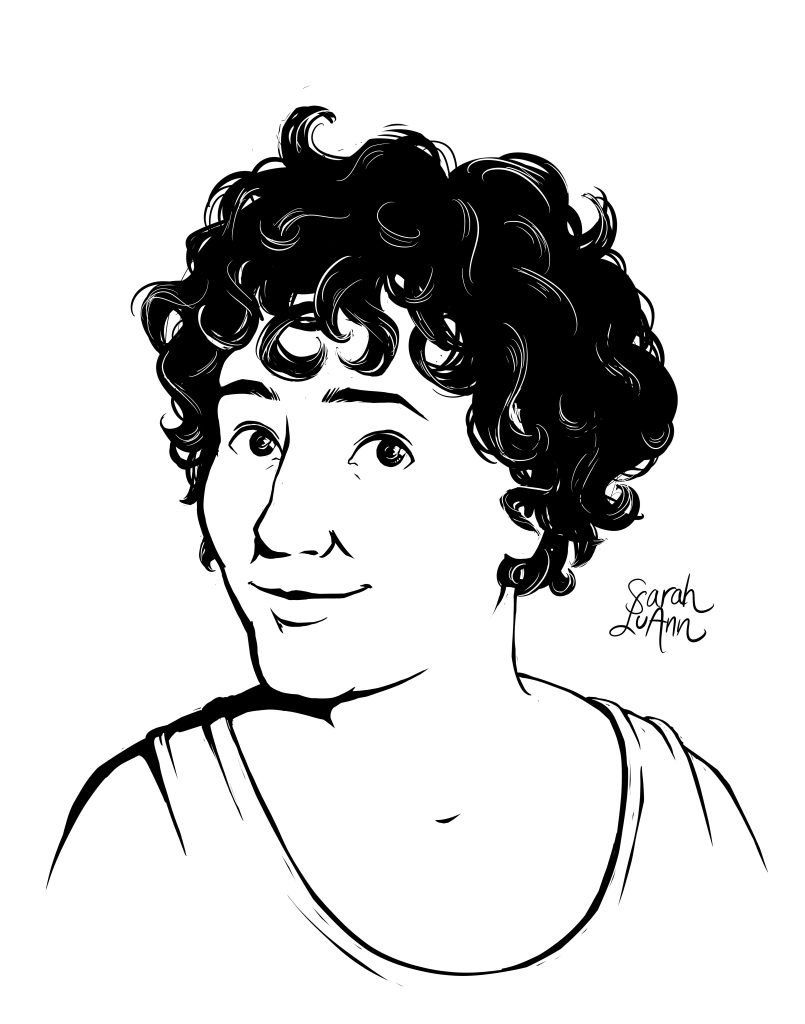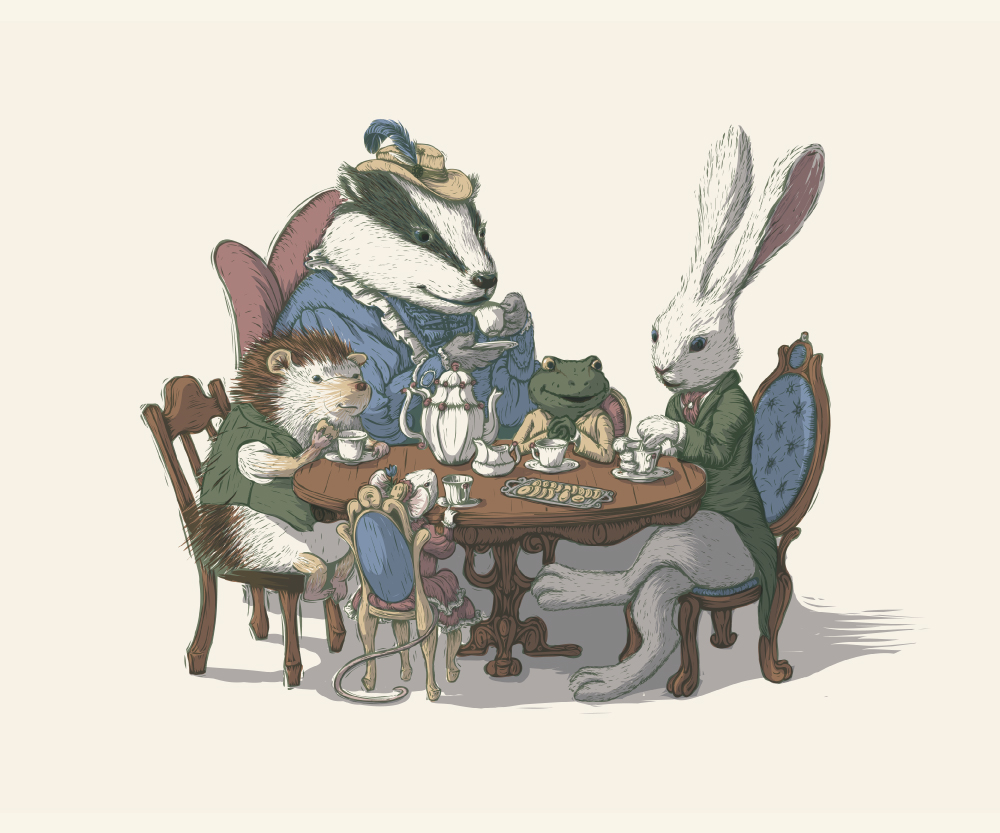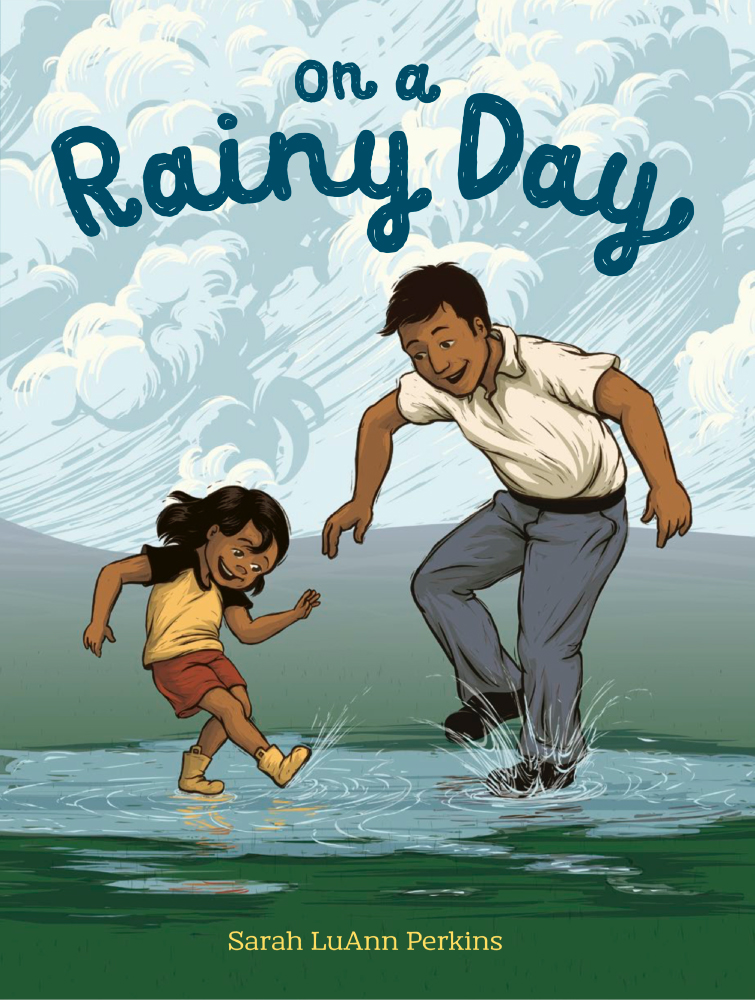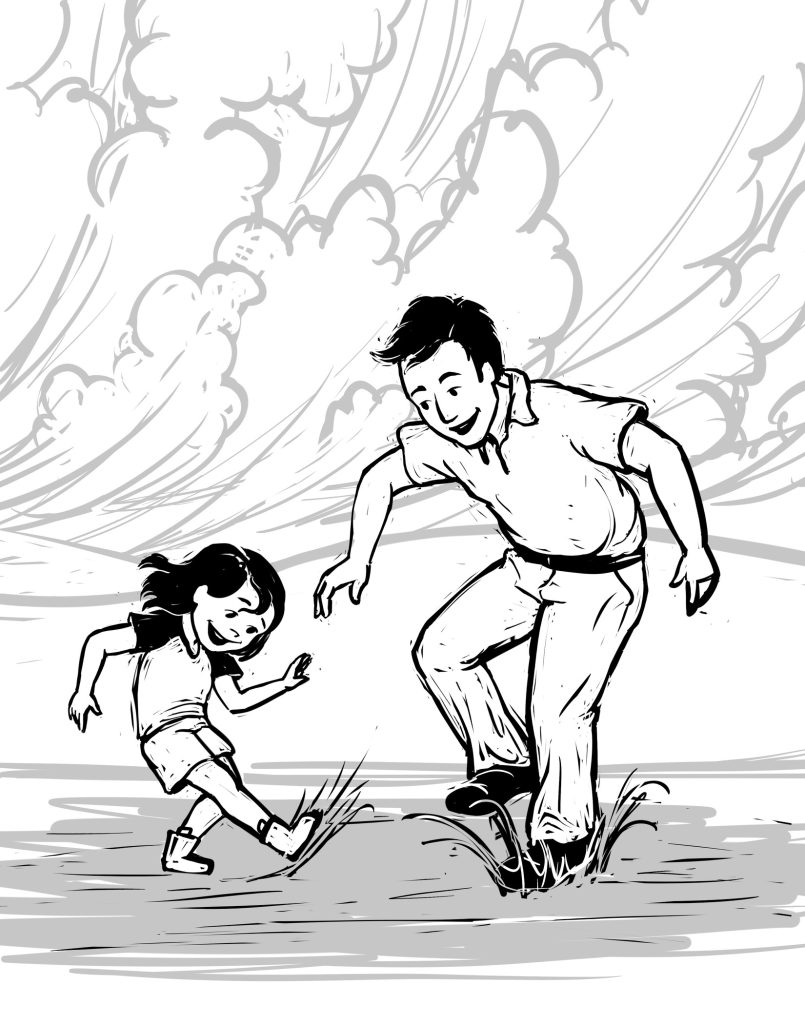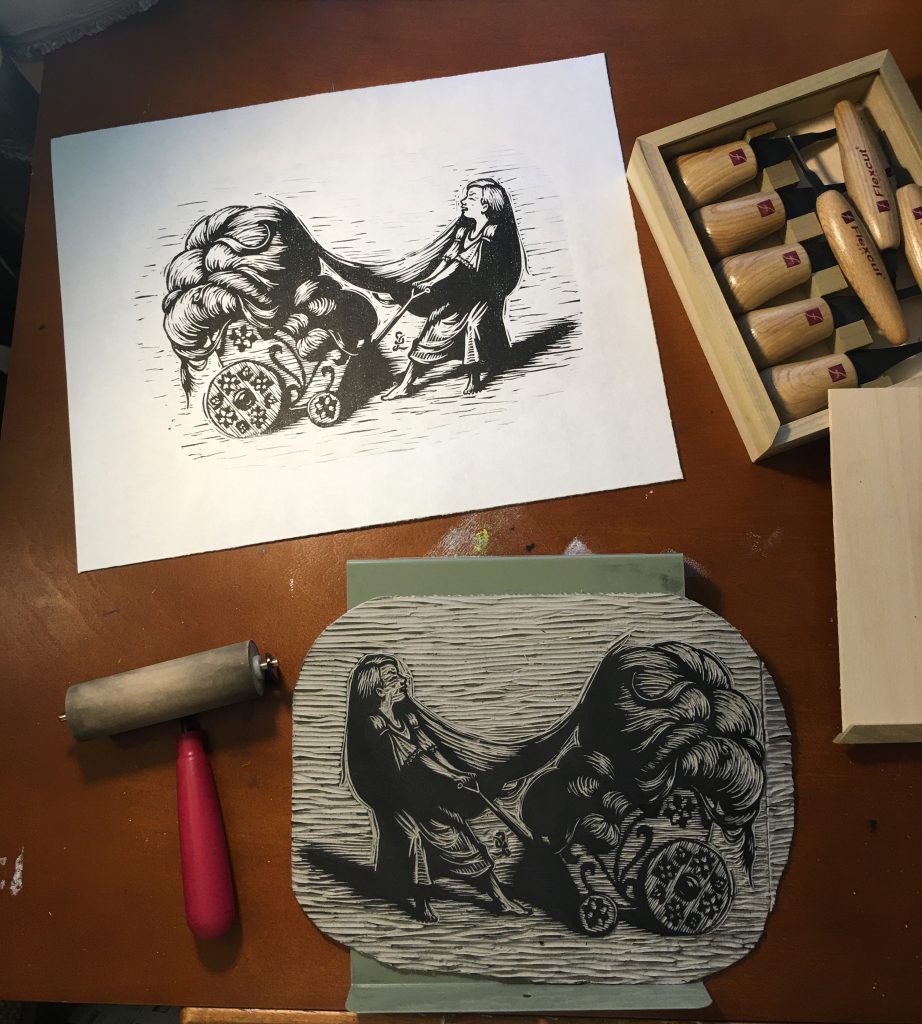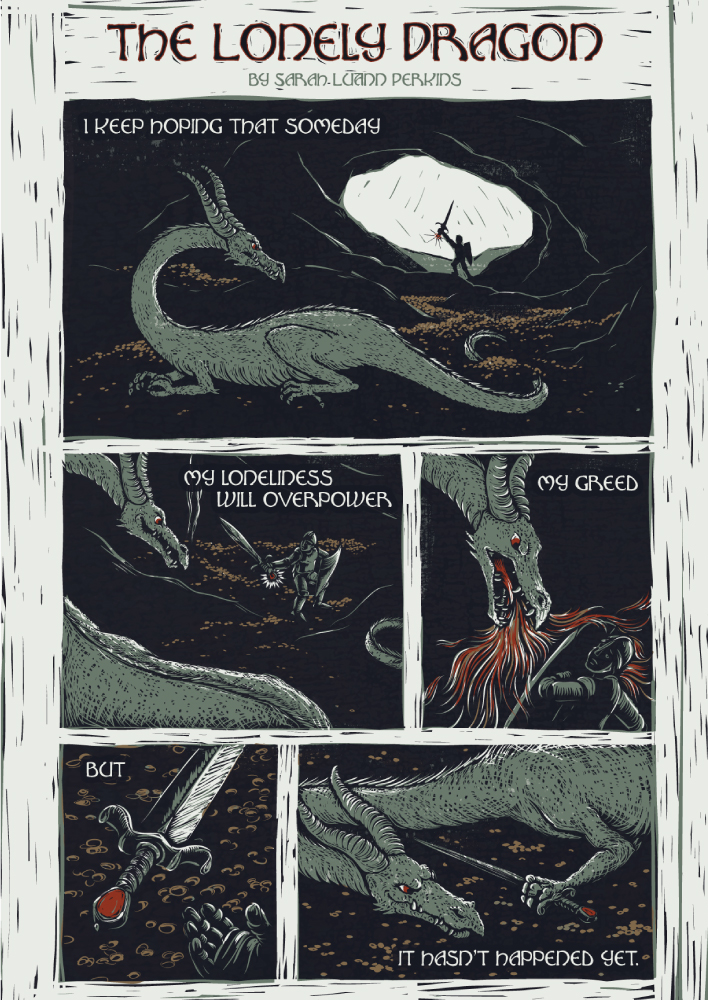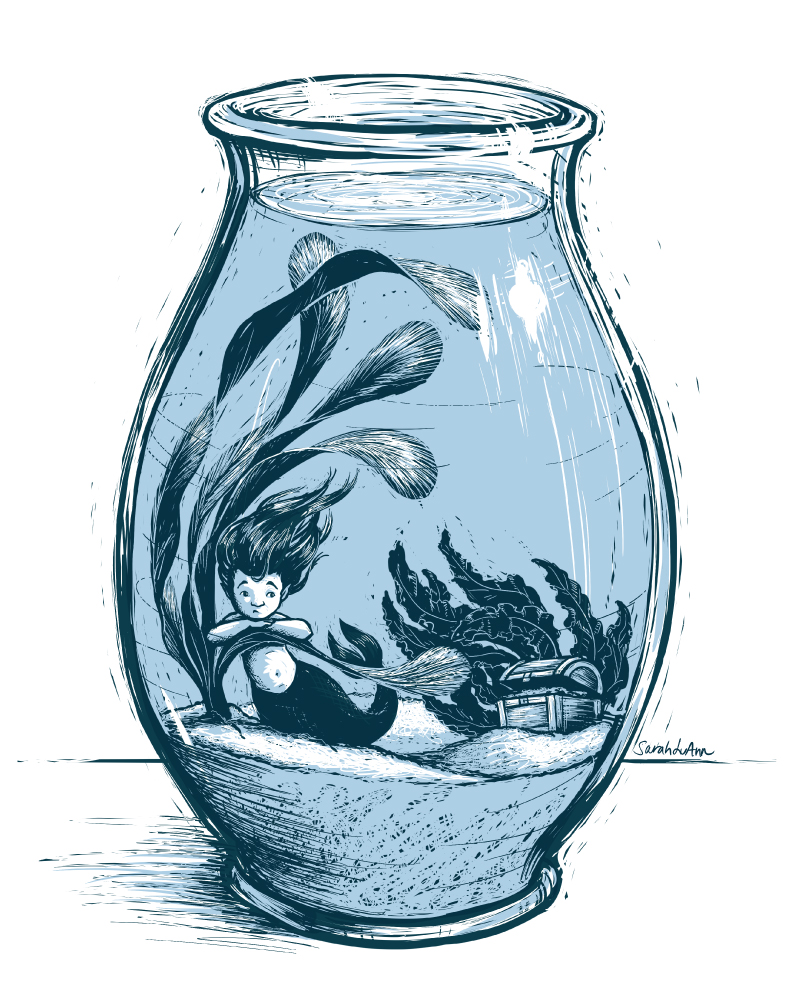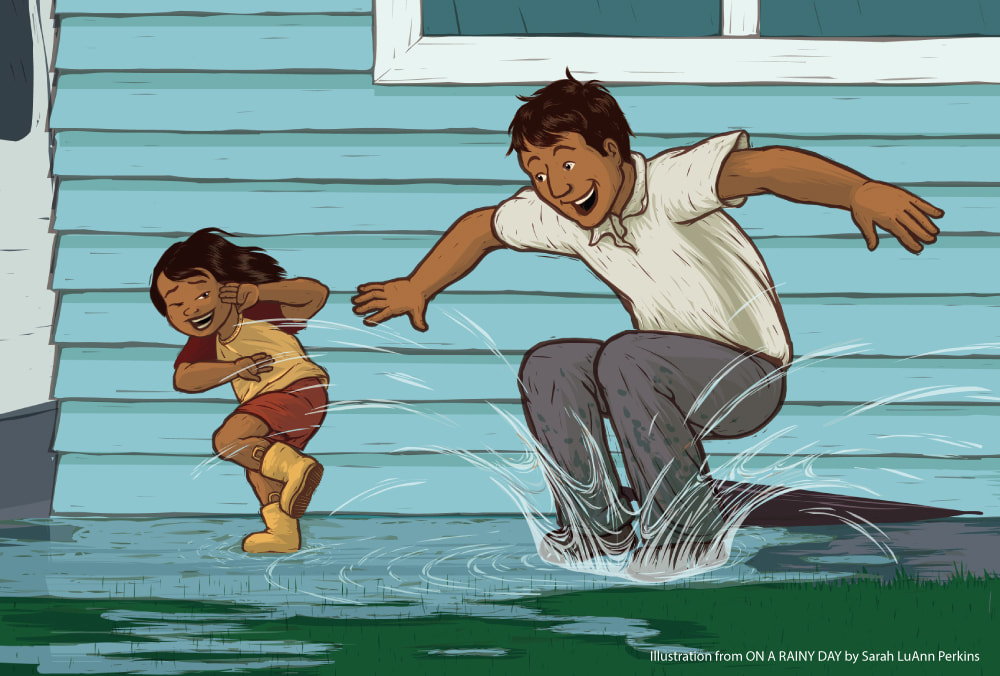
It’s time for another KidLit Connection interview, and I’m so happy to share this month’s author-illustrator. Sarah LuAnn Perkins is a traditional linocut and digital illustrator and author of children’s books. Her debut picture book, On a Rainy Day (published by Viking Children’s Books/Penguin Young Readers), which was inspired by the sounds of rain storms while caring for her own child, came out in March of 2022. Sarah LuAnn’s art style is unique for today’s picture books, but resembles that of classic printmakers through her use of linocut block printing and digital illustration that is inspired by it.
In this interview, Sarah LuAnn discusses how she got started in illustration, what inspired her current style of art, and more about how her book was made. Plus, we’ll hear a little bit about a work-in-progress and some inspiration for pre-published and aspiring book creators. Thank you to Sarah LuAnn for joining us!
An interview with artist, illustrator, and author, Sarah LuAnn Perkins
We’d love to know more about you and your work as an illustrator and author. What brings you inspiration and what are some of the things you love most about making books for kids?
I’m inspired by all kinds of things! There is inspiration for stories all over the place, even just the sounds you hear on a rainy day. I love books and stories and think they’re a great way to learn and connect and explore ideas.
I love making books for kids because it helps me to look at things more closely, or in different ways than I’m used to. I try to remember what it was like to learn or experience something for the first time and create from that space.
How did you get your start creating children’s books? Was there anything in particular that lead you to pursue it?
Ever since I was little, I wanted to be an “artist” when I grew up, though my idea of what that would involve looked mostly like on painting canvases in a sunlit studio. I also always loved reading, and devoured novels in all my spare moments… and then of course I would make fanart based on them. Books and Art, Art and Books, those were always my two favorite things. However, it wasn’t until I was looking at college major options that I fully realized that Illustration was an option, and the perfect combination of those two interests. It seems obvious in retrospect, its funny it took me that long to get here! But ever since I did arrive at illustration, I haven’t looked back.
Your debut picture book, ON A RAINY DAY (Viking Children’s Books, Penguin Young Readers), creates a fun look at the sounds and activities that can happen when the weather suddenly changes. Can you tell us more about this book and how it came to be?
ON A RAINY DAY took years to make–from January 2017 to publication in March 2022. There were lots of ups and downs along the way, but I’ll try to stick to the important/interesting bits:
I first got the idea for this book in January of 2017. I was participating in the Storystorm challenge, where participants come up with a picture book idea for every day of January. My baby was napping and I was appreciating the sounds I could hear through the window in my mostly-silent house and I thought, what if I could use sounds to tell a story? I had many other ideas already listed, but I was more excited by this one than any of the others. I was so excited about it that I wrote a rough draft that night.
It went through many more drafts after that, of course, and I took many breaks–I had my first baby in 2016 and my second in 2018, so I was consumed in parenting for months at a time and then I would find some time to work and make some edits, only to set it aside for a few more months again. Having little kids made working harder in some ways, but was helpful in others–watching my husband playing with our daughter directly informed the father/daughter relationship I decided to center the story on.
Finally, in early 2019 I felt like I had a dummy book polished enough to query agents. I signed with my agent, Adria Goetz, a few months later, and she had suggestions for even more edits which I got to work on. I took the partially edited dummy to the Rutgers One-on-One conference in NJ. There I met with an art director from Viking Books, Kate Renner, who loved the book and the edits I had started making to it, so once I had the edits finished Viking was on the top of our list of imprints to send it to. After a couple rounds of “revise and resubmit” (which also took months to complete… are you sensing a theme here?) Meriam Metoui from Viking made an offer for it–her first offer as an editor–in August 2020.
And then of course there was more revision, finishing the art, editing the art, finishing touches such as hand drawn text and endpapers… until, finally it was a real printed book I could hold in my hands and share with book lovers, just over 5 years after I wrote the first draft.
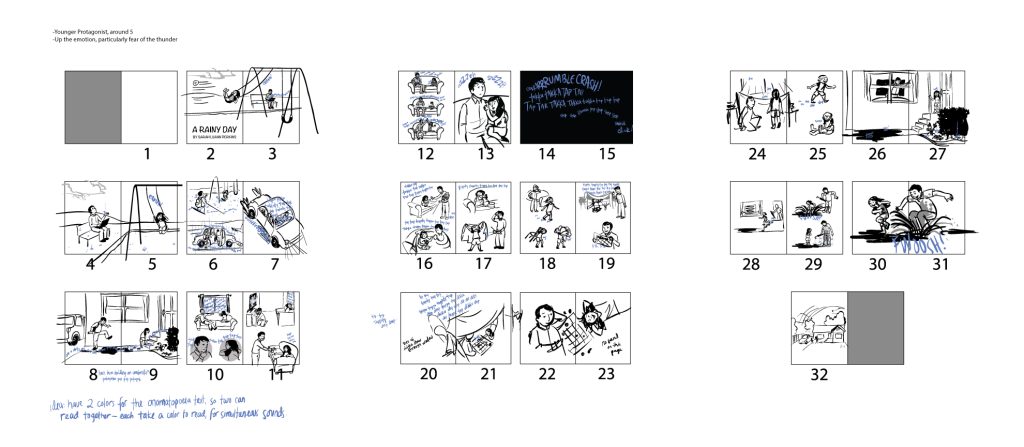
What was your favorite part about creating ON A RAINY DAY? And what was something you found particularly challenging while working on this project?
Ooh, this is really hard to choose! I do have to say, it was very satisfying to be at the point where all of the major text/sketch edits were done, and I just got to dive into completing the art. All of the difficult decisions were made, so I got to lose myself in the part of the process I have the most experience and confidence in. The biggest challenge was sticking with my story long enough to get it to that point!
The style of your work is inspired a lot by linocut and woodcut printmaking. Can you share more about your art processes and how you work?
In college I experimented a lot with different styles of illustration, especially in my campus job illustrating online courses. For every course I was assigned to illustrate I would think of a different style to use, related to the course subject if possible. I was assigned to illustrate a history course and I thought that a linocut-inspired style (done digitally) would have a old-timey feel that would fit with the subject matter. I had a lot of fun illustrating that course, but moved on to different illustration styles for other projects afterward and didn’t think much about it.
After graduation, I was working on putting together a portfolio that I could feel confident putting in front of art directors. I looked back over all the projects I had done while working on my illustration degree and remembered how much fun I had making linocut-inspired illustrations and decided to try that again for fun. I studied actual printmakers so I could get the look just right.
A linocut is created by carving around a design on a linoleum block. The pieces of the design that will be printed are left while the places where you don’t want ink are carved away. Ink is then rolled over the top and paper pressed on top of it to make your print. It is similar to a stamp, but larger. The carving process results in a texture and line quality that is distinctive.
I made a “digital linocut’ and loved it, so I tried it again. And again. And Again. I perfected my process to the point where I’ve had actual printmakers assume my digital work is an actual hand-carved print. I found I really loved the subtractive process, the bold shapes, and the interesting textures that resulted, so what I originally assumed was just a fun style experiment quickly filled my entire portfolio because the process and resulting illustrations were so satisfying to me.
After filling my portfolio with digital imitation-linocuts, I was gifted a small printing press from a local artist and finally had the excuse I needed to carve prints for real! Now I jump between digital and traditional printmaking, but my style in both is basically the same.
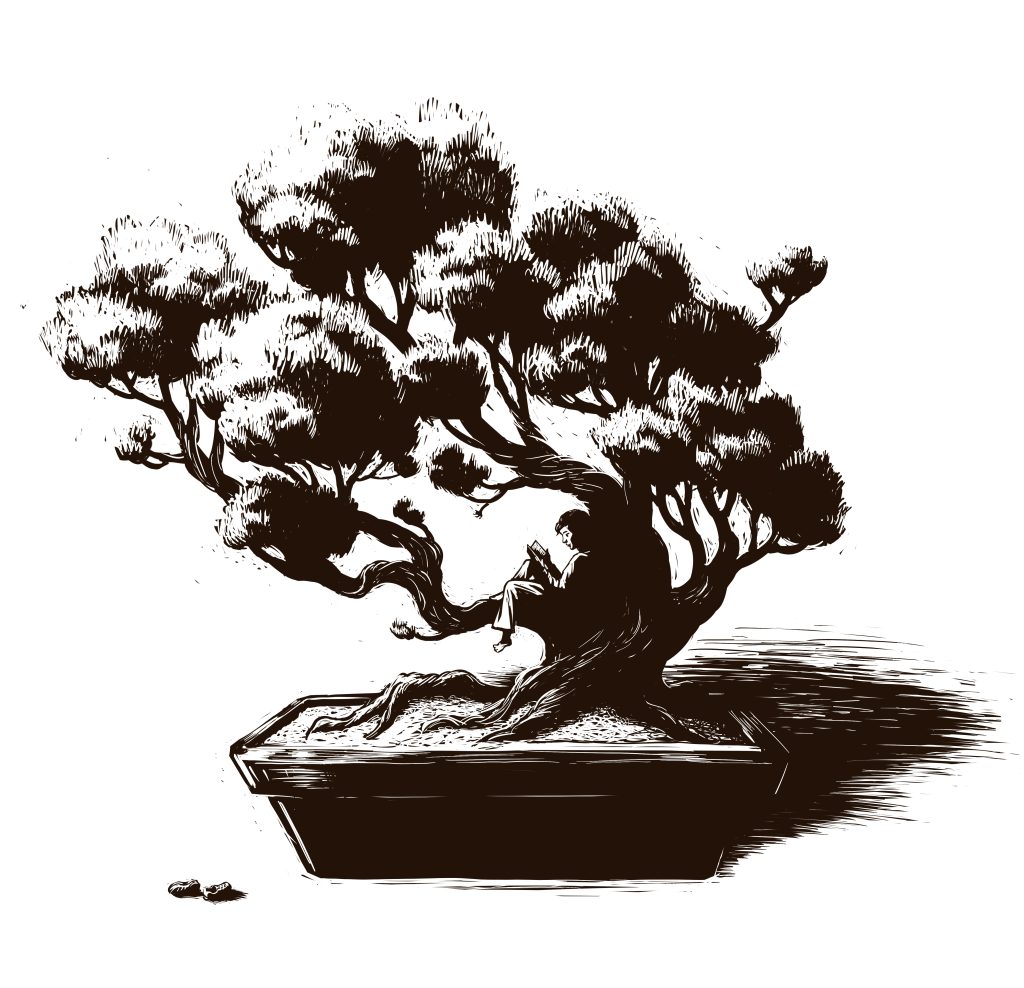
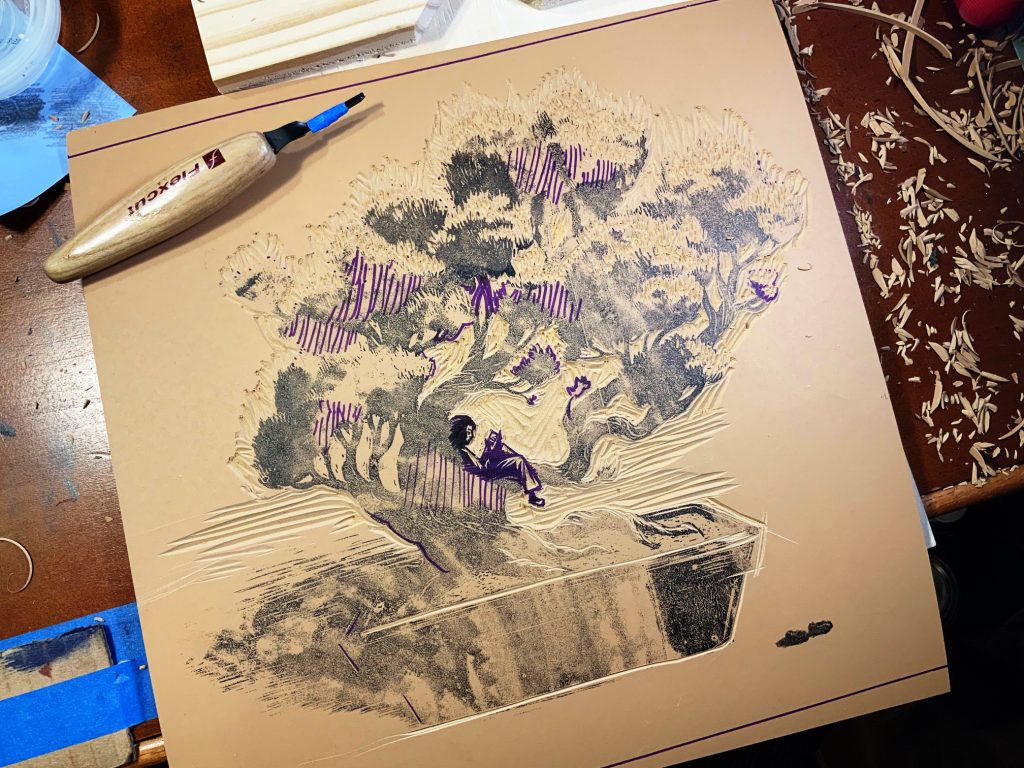
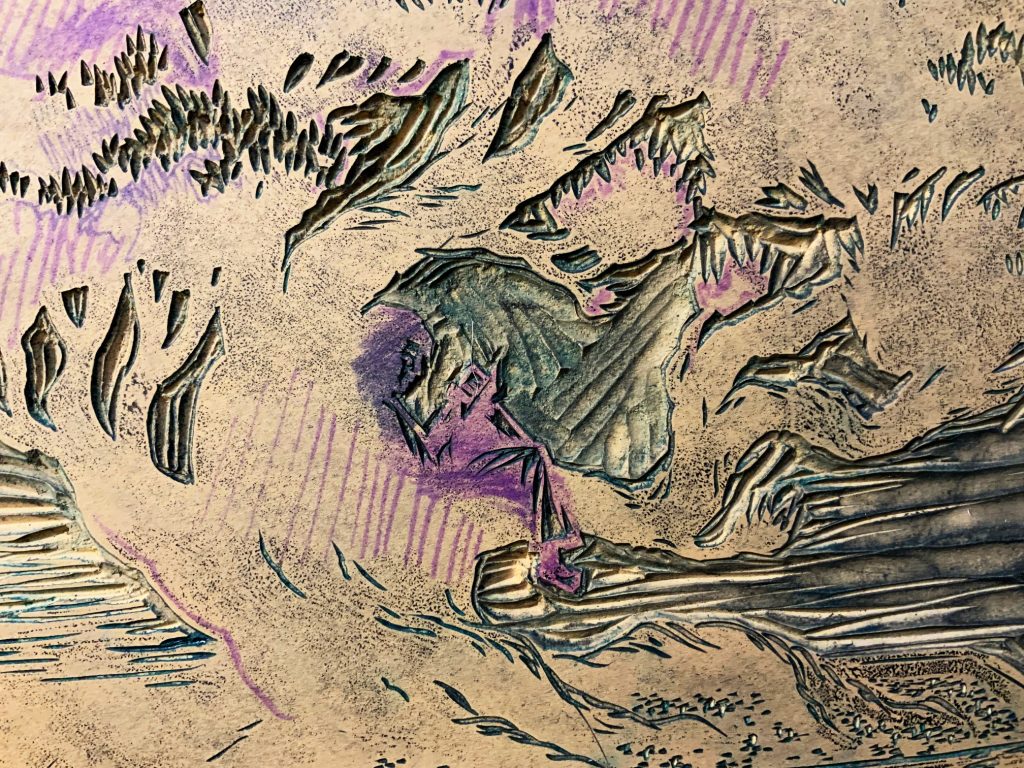
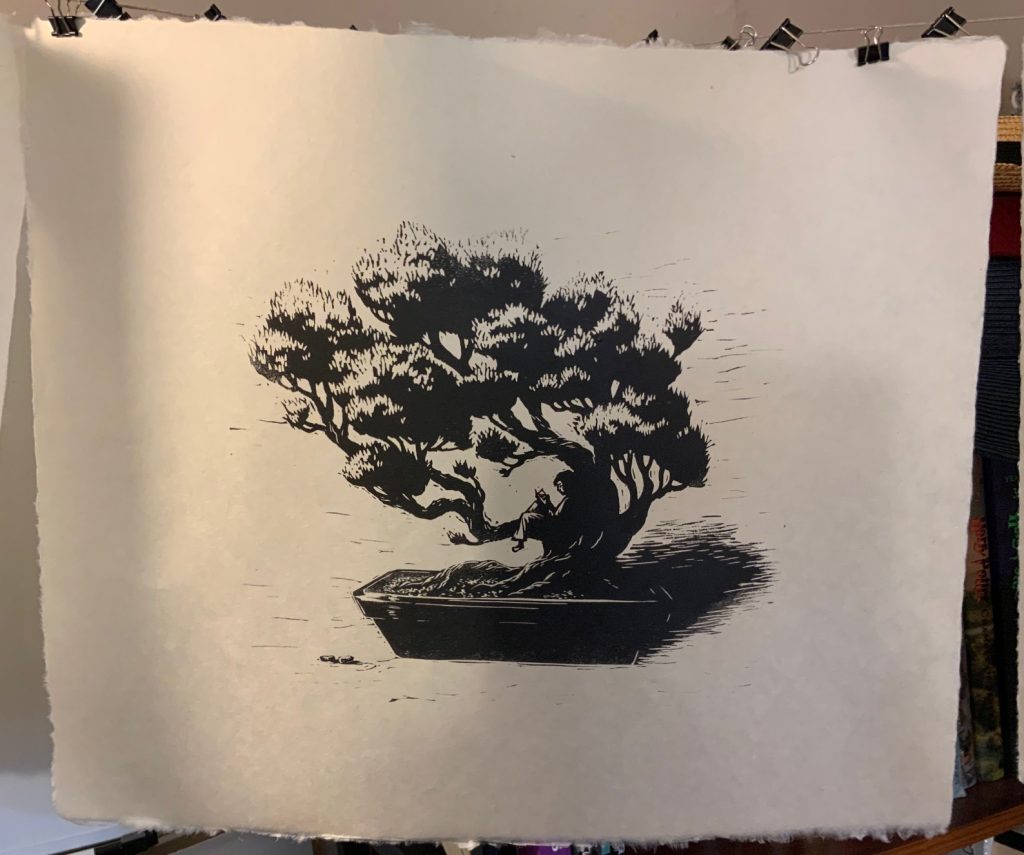
You also have a new graphic novel you’ve been working on. Can you tell us more about that project?
Its still in the early stages, but I’m really excited about this story! Its about a house-cleaning robot who is not too pleased when its family adopts a cat. It has definitely been a challenge to shift from thinking in picture book terms to graphic novel terms, since the scale of the story and the way it is told is partially the same but also different in significant ways.
What are some of the big differences you’ve found between working on a graphic novel versus working on a picture book?
With a picture book, I can hold the whole story in my head at once. Creating a written outline never seemed entirely necessary because the story was short enough that I could hold the outline in my head.
With a graphic novel, I’m finding that if I just try writing without having a full idea of where the story is going I get completely stuck. I thought I didn’t need outlines, but it turns out I actually did have outlines for my picture book projects, I just didn’t write them down. Once I realized this and wrote out an outline for my story things started working.
What other types of work have you done as an illustrator that relates to your work as a book creator?
My first job after college was working for Cricut making art for die-cutting machines. It taught me to keep my files organized and understandable for other people who might have to use them further along in the process. Working as a team and seeing myself as just one contributor to a project created by a group was a great skill to learn. Even though as an author-illustrator more of the process lands on me, keeping that mindset not only helps me work with my agent, editor, art director, etc, but it also helps me make things easier for myself down the line in the project.
What is your greatest wish for your work as a children’s book creator?
Grandiose as it sounds, I want to change people through my stories. It feels really bold to say that, but as someone for whom reading books lead to important and life-changing realizations, I think its entirely possible. Books were and still are instrumental in teaching me to think for myself, understand other diverse experiences, and feel validated in my own experiences. My dream is to make books and stories that can do that for other people.
What is something you’d like to tell aspiring picture book illustrators and author/illustrators?
Give yourself the time and space to experiment, to find the creative approach that gets you excited and feels like you. Figure out who you’re creating for and don’t worry about pleasing anyone else–no book is for “everybody”. Find people who will cheer for you and get what you’re trying to do, and who you can also cheer for. Breaks are not only ok, but necessary.
Learn more about Sarah LuAnn and her work:
To learn more about Sarah LuAnn Perkins and follow her latest projects, connect with her online through her website and social media:
Sarah LuAnn is represented for children’s books by Adria Goetz at KT Literary.
Are you a published or soon-to-be published illustrator or author/illustrator who loves creating books about nature, animals, or the environment? I’d love to chat with you for a KidLit Connection interview! Send me a message.
